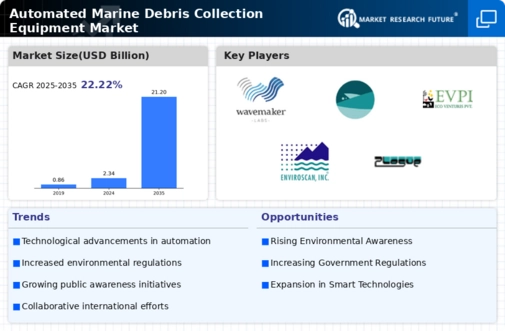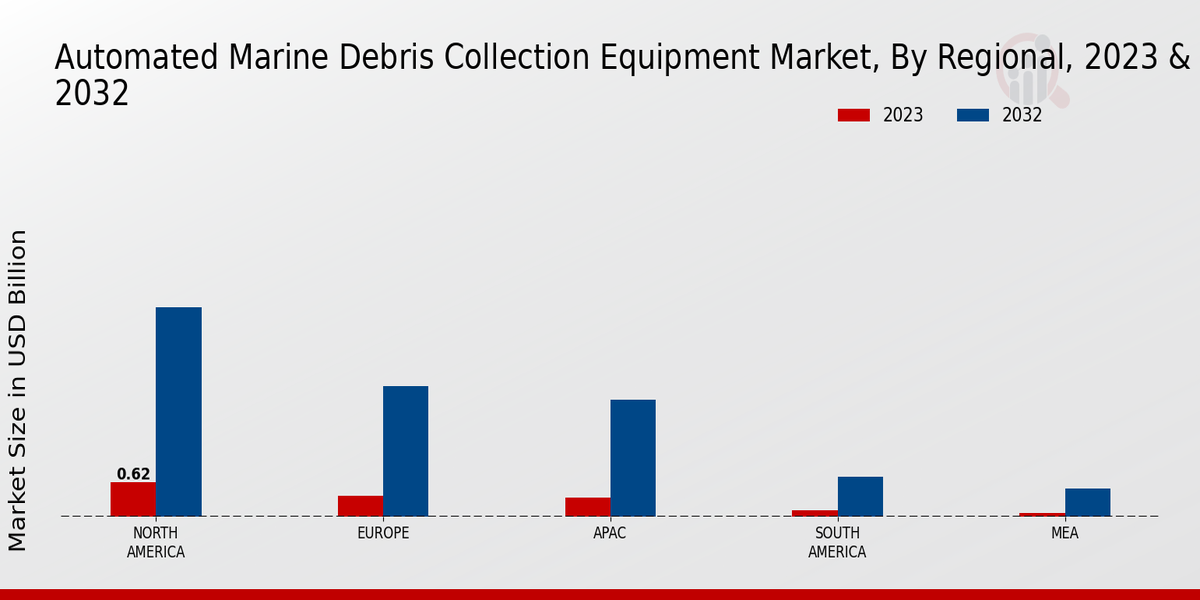Technological Advancements
Technological innovations play a pivotal role in the Global Automated Marine Debris Collection Equipment Market Industry. Advancements in robotics, artificial intelligence, and sensor technology enhance the efficiency and effectiveness of debris collection systems. For example, autonomous vessels equipped with advanced navigation systems can operate in challenging marine conditions, significantly increasing debris collection rates. These innovations not only improve operational efficiency but also reduce labor costs associated with manual collection methods. As technology continues to evolve, the market is expected to grow substantially, with projections indicating a rise to 21.2 USD Billion by 2035.
Public-Private Partnerships
Public-private partnerships are emerging as a significant driver in the Global Automated Marine Debris Collection Equipment Market Industry. Collaborative efforts between governments and private companies are fostering innovation and accelerating the deployment of automated debris collection systems. These partnerships often leverage shared resources and expertise, resulting in more effective solutions for marine debris management. For example, joint initiatives have led to the development of specialized vessels designed for efficient debris collection in various marine environments. As these partnerships continue to evolve, they are likely to enhance market growth, contributing to the anticipated CAGR of 22.2% from 2025 to 2035.
Increasing Environmental Awareness
The Global Automated Marine Debris Collection Equipment Market Industry is experiencing growth driven by heightened environmental awareness among governments and the public. As pollution levels in oceans rise, initiatives aimed at reducing marine debris gain traction. For instance, various countries have implemented policies mandating the use of automated debris collection systems in coastal areas. This shift reflects a broader commitment to sustainability, with investments in technology that can efficiently remove waste from marine environments. The market is projected to reach 2.34 USD Billion in 2024, indicating a robust response to environmental challenges.
Government Regulations and Policies
Government regulations and policies are crucial drivers of the Global Automated Marine Debris Collection Equipment Market Industry. Many nations are enacting stricter regulations to combat marine pollution, which often includes mandates for the adoption of automated debris collection technologies. For instance, the European Union has introduced directives aimed at reducing plastic waste in oceans, encouraging member states to invest in automated solutions. This regulatory landscape not only fosters market growth but also incentivizes innovation in debris collection technologies. The anticipated CAGR of 22.2% from 2025 to 2035 underscores the potential for expansion in this sector.
Rising Investment in Clean Technology
The Global Automated Marine Debris Collection Equipment Market Industry benefits from increasing investments in clean technology. Governments and private entities are recognizing the economic potential of sustainable practices, leading to funding for innovative debris collection solutions. Initiatives such as public-private partnerships are emerging, facilitating the development and deployment of advanced collection systems. This influx of capital supports research and development, enabling the introduction of more efficient and cost-effective technologies. As the market matures, the financial backing is expected to drive growth, contributing to the projected market size of 21.2 USD Billion by 2035.

















Leave a Comment